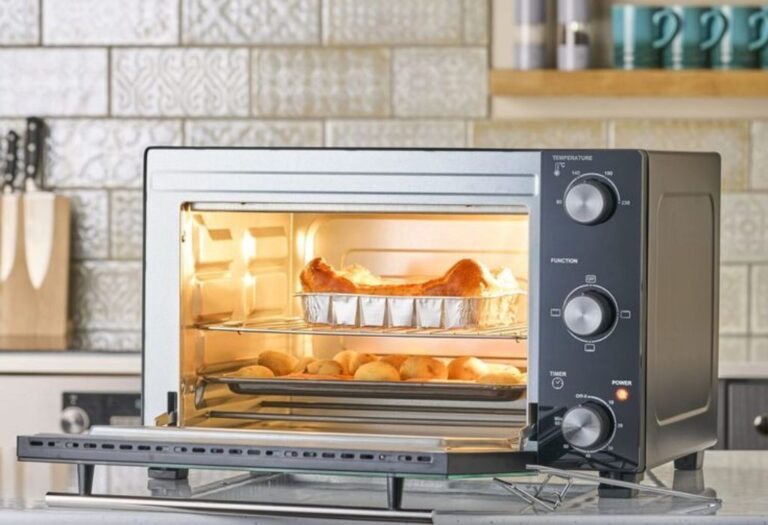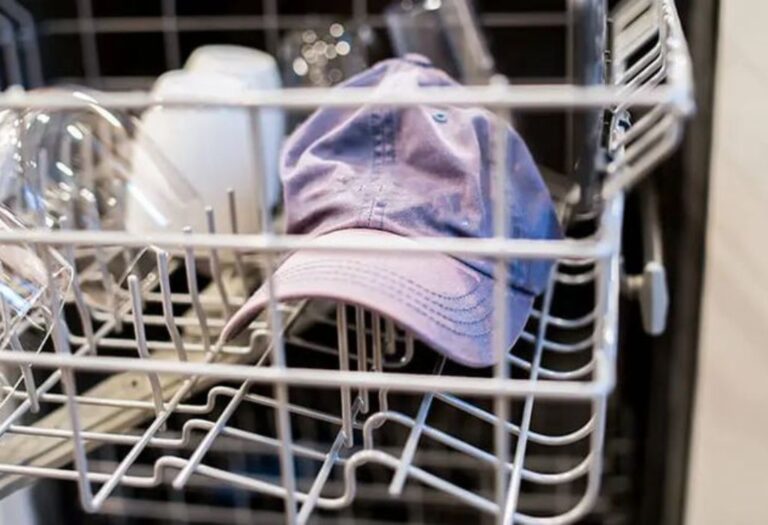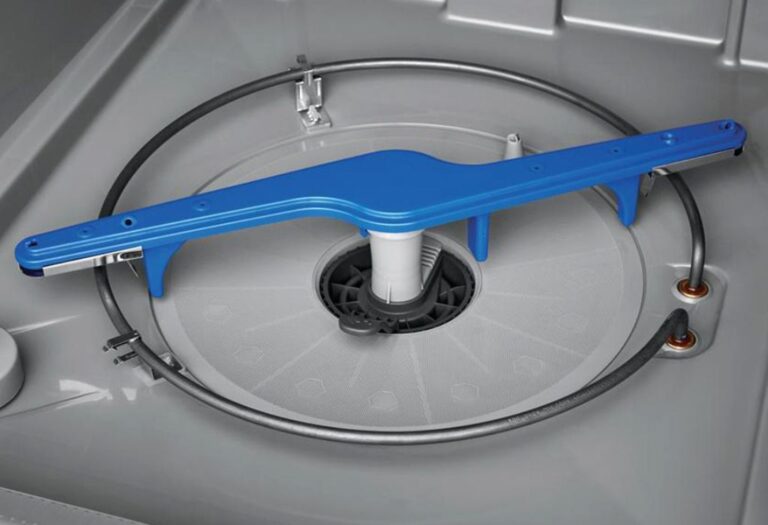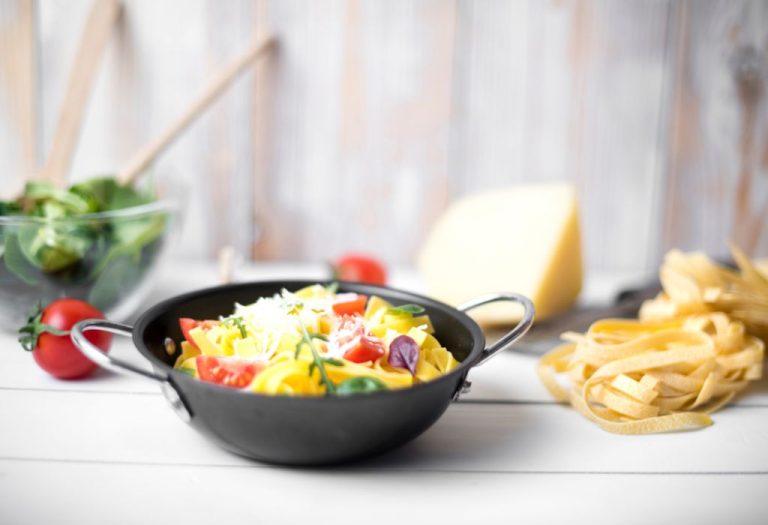A sharp knife gliding through fresh vegetables can be satisfying to watch. Yet, behind that smooth slice lies a hidden danger. Every year, more than 350,000 people in the United States are treated in emergency rooms for kitchen knife injuries, with fingers and hands being the most affected areas (CDC).
Knife safety in the kitchen is not just a matter of skill. It is a combination of the right tools, proper techniques, and focused attention. Whether preparing a simple salad or a gourmet meal, one small mistake can lead to painful, sometimes life-changing accidents.
In this guide, discover 12 expert-backed tips to prevent cuts, improve your control, and make every chopping session safer. These habits are simple enough for beginners yet trusted by professional chefs worldwide.
Knife Safety in the Kitchen: Why It Matters
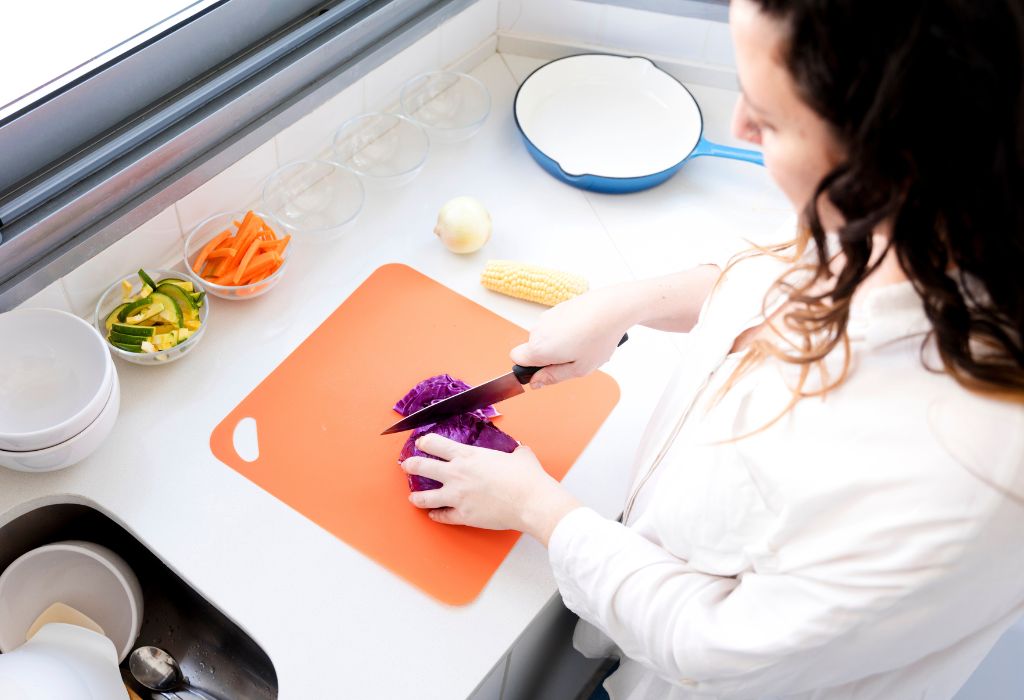
Knives are essential in any kitchen, but they are also one of the leading causes of injuries. According to the U.S. Consumer Product Safety Commission, more than 350,000 people visit emergency rooms each year due to knife-related accidents.
The National Safety Council lists kitchen knives among the top causes of nonfatal kitchen injuries. Most of these involve cuts to the hands and fingers.
Common causes include poor grip, dull blades, and cluttered workspaces. A slippery cutting board or messy counter can turn a simple task into a serious hazard.
Even experienced cooks are at risk. Most accidents happen during routine tasks when focus slips.
Safety starts with awareness. A proper pinch grip, sharp blades, and a clean workspace can greatly reduce risks while improving efficiency.
Tip 1 – Master the Pinch Grip for Maximum Control
The pinch grip is the foundation of safe and efficient cutting. It gives you better balance and control over the blade.
To do it, place your thumb and index finger on the blade just above the handle. Wrap your other fingers comfortably around the handle.
This grip reduces strain and keeps the knife from wobbling. Professional chefs use it because it allows precise, steady movements.
The wrong grip increases the risk of slipping, especially when cutting harder foods. A loose handle-only grip can quickly lead to accidents.
Practice the pinch grip slowly until it feels natural. Once mastered, it becomes second nature, improving both safety and speed.
Tip 2 – Keep Your Knives Razor Sharp
A dull knife is more dangerous than a sharp one. It forces you to use more pressure, increasing the chance of slipping.
According to Cook’s Illustrated, sharp knives can reduce the risk of injury by up to 50 percent. The cleaner cuts also protect the texture and appearance of food.
Check sharpness by slicing through a sheet of paper. If the blade snags or tears instead of gliding, it needs sharpening.
Hone your knife before or after each use with a honing rod. This keeps the edge aligned between sharpenings.
For sharpening, use a whetstone, manual sharpener, or professional service every 2–3 months, depending on usage.
Never postpone sharpening because a dull blade not only slows you down but also puts your safety at risk.
Tip 3 – Choose the Right Knife for the Job
Using the wrong knife can make a task harder and more dangerous. Each knife is designed for specific cutting techniques.
A chef’s knife works best for chopping vegetables and slicing meat. A paring knife is ideal for peeling and detailed tasks.
Serrated knives excel at cutting bread or tomatoes without crushing them. For dense items like squash, use a heavier knife for more control.
The National Safety Council warns that forcing a knife to do a job it wasn’t designed for increases the risk of slips.
Keeping multiple knives for different tasks is not a luxury — it is an important safety measure.
Tip 4 – Secure Your Cutting Surface
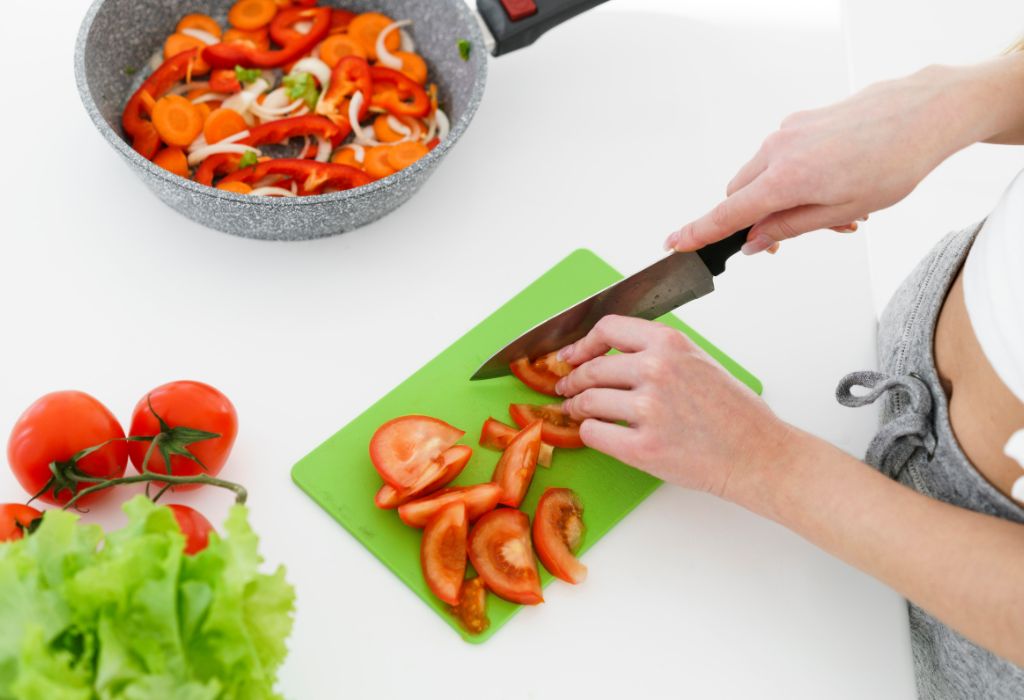
A stable cutting board is as important as a sharp knife. A board that slides can cause sudden slips and injuries.
Place a damp kitchen towel or non-slip mat under your cutting board. This creates friction and keeps it steady.
The CDC advises using separate boards for raw meat and produce to prevent cross-contamination. Stability matters for both safety and food hygiene.
Avoid cutting directly on countertops or unstable surfaces. These can damage knives and reduce control.
A secure cutting surface keeps the blade where it should be — in contact with the food, not your fingers.
Tip 5 – Mind Your Fingers: The Claw Technique
The claw technique is a proven way to protect your fingers while cutting. It keeps fingertips tucked safely out of the blade’s path.
Curl your fingers inward, resting the knife blade against your knuckles. Move the food forward with your fingertips hidden.
Professional kitchens teach this as a first step for new chefs. It builds muscle memory for safer, faster cutting.
Without this technique, fingers can easily slip into danger. The American Culinary Federation emphasizes that most kitchen knife injuries involve unprotected fingertips.
Practicing the claw technique may feel awkward at first, but it quickly becomes second nature. Safety and precision will improve with every cut.
Tip 6 – Focus and Avoid Distractions
Most knife accidents happen when attention drifts. Even a moment of distraction can lead to a serious injury.
Phones, conversations, and background noise can pull focus away from your hands. Keep distractions to a minimum while cutting.
The National Safety Council notes that multitasking in the kitchen increases the risk of accidents by more than 40 percent.
If you need to step away, place the knife flat on the counter. Never keep slicing while your attention is elsewhere.
A few minutes of focused cutting is safer — and often faster — than rushing through while distracted.
Tip 7 – Safe Knife Passing and Carrying
Passing or carrying a knife the wrong way can cause unexpected injuries. The safest method is to place the knife down on a flat surface for the other person to pick up.
If carrying a knife, hold it by the handle with the blade pointing down and the sharp edge facing behind you.
This prevents accidental contact with the blade if someone passes nearby. The American Culinary Federation recommends keeping your arm close to your side when carrying knives.
Never hand a knife to someone blade-first. Even a small misstep could cause a serious cut.
Safe passing and carrying habits keep everyone in the kitchen protected.
Tip 8 – Store Knives the Right Way

Proper storage keeps knives sharp and prevents accidents. Loose knives in a drawer can dull blades and cause unexpected cuts.
Use a knife block, magnetic strip, or protective blade guards to keep edges covered. These methods also make knives easier to find and grab safely.
The National Kitchen & Bath Association recommends storing knives separately from other utensils. This reduces wear and prevents accidental contact with sharp edges.
Avoid tossing knives into sinks or leaving them on counters. Even a moment of carelessness can result in injury.
Safe storage is as important as safe cutting — it protects both you and your tools.
Tip 9 – Clean Knives with Care
Washing knives incorrectly can cause injuries and damage the blade. Hand-wash knives immediately after use with warm, soapy water.
Avoid leaving knives soaking in sinks where they can’t be seen. This is a common cause of accidental cuts.
The American National Standards Institute advises against dishwashers for high-quality knives. Heat and harsh detergents can dull and weaken blades over time.
Hold knives by the handle when washing and drying. Always dry them fully before storing to prevent rust.
Careful cleaning ensures knives remain sharp, safe, and ready for use.
Tip 10 – Respect the Danger of Falls
Dropping a knife can cause serious injury if handled carelessly. Never try to catch a falling knife — step back and let it land.
Many injuries occur when people instinctively reach out. The National Safety Council warns that attempting to grab a falling blade greatly increases the risk of deep cuts.
After the knife lands, pick it up by the handle and inspect for damage. Chips or bent tips can make the blade unsafe for future use.
Keeping hands and feet out of the way during a fall is the safest reaction.
Quick reflexes are useful in cooking, but not when a knife slips.
Tip 11 – Teach Knife Safety to Others in the Home
Everyone who uses the kitchen should know basic knife safety. This is especially important in homes with children or beginners.
Set clear rules, such as where knives are stored and who can use them. Supervise anyone learning to cut until they are confident.
The American Red Cross suggests starting with safe, soft foods and smaller knives for training. This builds skills without exposing learners to high risks.
Explain techniques like the claw grip and pinch grip early. These habits will stick for life.
A kitchen where everyone respects knife safety is a safer, more efficient place to cook.
Tip 12 – Know First Aid for Cuts
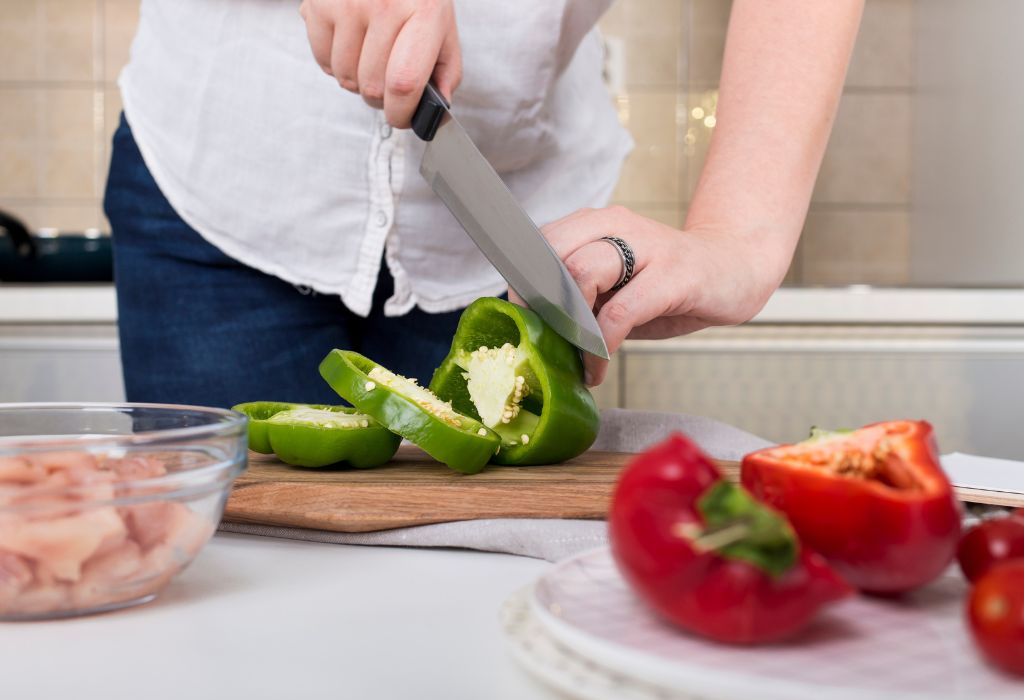
Even with the best precautions, accidents can happen. Knowing basic first aid can make a big difference in recovery.
For minor cuts, rinse under cool running water and apply gentle pressure with a clean cloth. Once bleeding stops, cover with a sterile bandage.
According to the Mayo Clinic, deep cuts that do not stop bleeding within 10 minutes require medical attention. Seek emergency care if the wound is large, deep, or caused by a dirty blade.
Keep a small first aid kit in the kitchen with bandages, antiseptic wipes, and medical tape.
Preparedness ensures quick, safe treatment when the unexpected occurs.
Common Knife Safety Myths
Many kitchen accidents happen because of false beliefs about knife safety. Knowing the truth can help prevent injuries.
Myth 1: A dull knife is safer than a sharp one
In reality, dull knives require more force, making slips more likely. Sharp knives cut with less effort and greater control.
Myth 2: Only professional chefs need proper technique
Accidents can happen to anyone. Good habits benefit beginners and experts alike.
Myth 3: Handing someone a knife blade-first is safe if they are careful
Passing a knife blade-first is always risky. Placing it down for the other person to pick up is the safest method.
Myth 4: You can wash knives in a dishwasher without problems
Dishwashers can dull blades and weaken handles over time. Hand-washing is best for both safety and longevity.
Dispelling these myths helps create safer kitchen practices for everyone.
Final Knife Safety Checklist
Keep this checklist handy to make safe cutting a daily habit:
- ✅ Use the pinch grip for better control
- ✅ Keep knives sharp and honed regularly
- ✅ Choose the right knife for the task
- ✅ Secure your cutting surface before slicing
- ✅ Practice the claw technique to protect fingers
- ✅ Focus on the task and avoid distractions
- ✅ Pass and carry knives safely
- ✅ Store knives in a block, magnetic strip, or guard
- ✅ Wash knives by hand, never soak in sinks
- ✅ Never try to catch a falling knife
- ✅ Teach others proper knife handling
- ✅ Know basic first aid for cuts
Following this checklist consistently can reduce the risk of kitchen knife injuries by a significant margin.
Frequently Asked Questions about Knife Safety in the Kitchen
1. What is the safest way to hold a kitchen knife?
The safest method is the pinch grip, where your thumb and index finger hold the blade just above the handle, and the rest of your fingers wrap around the handle.
2. How often should kitchen knives be sharpened?
For regular home cooking, sharpen every 2–3 months and hone before or after each use to maintain the edge.
3. Is a dull knife safer than a sharp one?
No. A dull knife requires more force, making slips more likely. A sharp knife cuts more easily and predictably.
4. Can I wash kitchen knives in the dishwasher?
It is not recommended. Dishwashers can dull the blade, damage the handle, and cause rust. Hand-washing is best.
5. What should I do if I cut myself while cooking?
Rinse the cut with cool water, apply pressure to stop bleeding, and cover with a sterile bandage. Seek medical care for deep wounds.
6. How can I make my cutting board safer?
Place a damp towel or non-slip mat underneath to prevent slipping. Use separate boards for meat and produce to avoid contamination.
7. What is the claw technique?
It is a method of curling fingers inward while holding food so fingertips stay out of the blade’s path.
8. How should I store kitchen knives?
Use a knife block, magnetic strip, or blade guards. Avoid tossing them loosely into drawers.
9. Should children be allowed to use kitchen knives?
Yes, but only under close supervision with small, safe knives and age-appropriate tasks.
Conclusion
Knife safety in the kitchen is not just a skill — it is a habit that protects everyone who steps into the cooking space. With more than 350,000 knife-related injuries treated annually in U.S. emergency rooms, the importance of safe handling cannot be overstated.
By mastering techniques like the pinch grip and claw hold, keeping blades sharp, and maintaining a clean, organized workspace, accidents become far less likely. These habits not only protect your hands but also improve your cooking efficiency.
Whether you are preparing a simple snack or a multi-course meal, the way you handle a knife determines how safe and enjoyable the process will be. Start applying these 12 expert tips today, and your kitchen will be a safer place for years to come.
For more guidance on safe cooking practices, you can explore trusted resources like the National Safety Council and CDC Kitchen Safety Guidelines.
I’m Emma J. Caldwell, the founder, lead writer, and home-cooking enthusiast behind KitchenGuideCo.com. With a background in culinary arts and over a decade of cooking experience in both professional and personal kitchens, I created this platform to demystify recipes, offer smart kitchen gadget reviews, and guide readers through meal prep with confidence and clarity.


